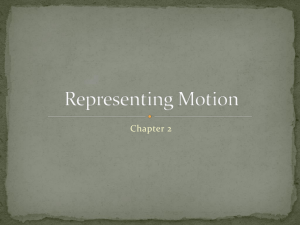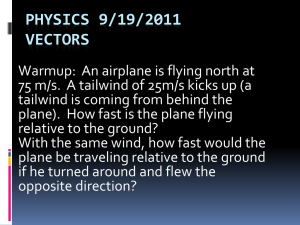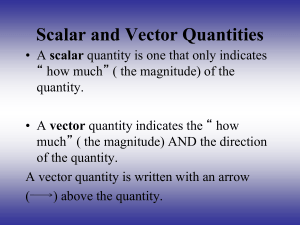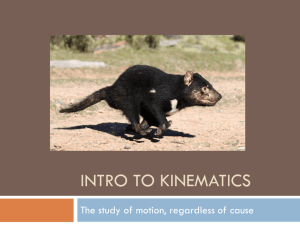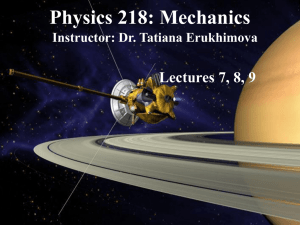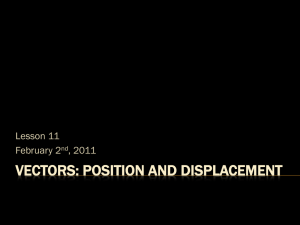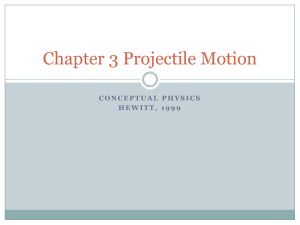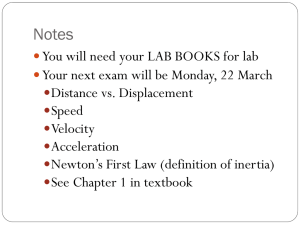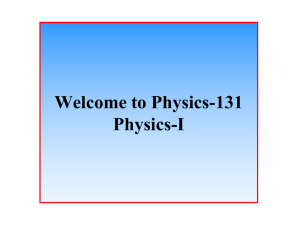vectors - Mayfield Science
advertisement
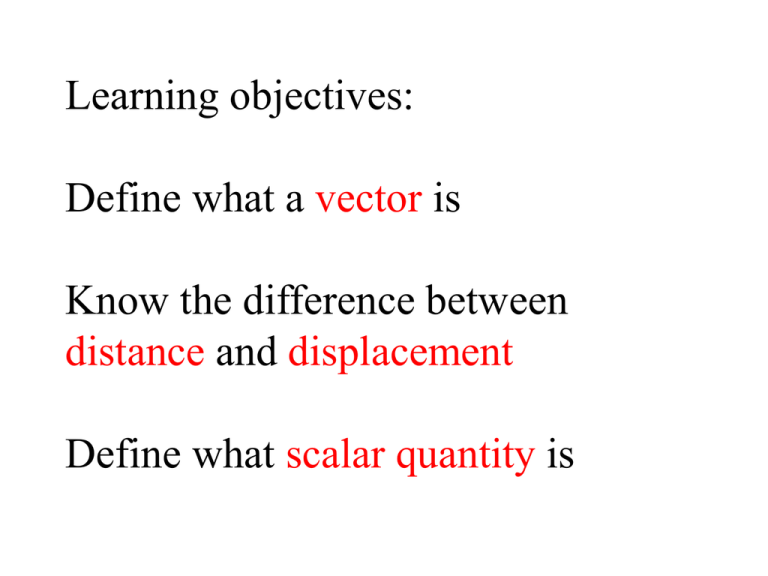
Learning objectives: Define what a vector is Know the difference between distance and displacement Define what scalar quantity is Distance is the length of the path between two points. Displacement is the direction from the starting point and the length of a straight line from the starting point to the ending point. A vector is a quantity that has magnitude and direction. The magnitude can be size, length, or amount. Arrows on a graph or map are used to represent vectors. The length of the arrow shows the magnitude of the vector. Vector addition is the combining of vector magnitudes and directions The vector in red is called the resultant vector, which is the vector sum of two or more vectors. In this case, it shows the displacement. The resultant vector points directly from the starting point to the ending point Displacement Along a Straight Line When two displacements, represented by two vectors, have the same direction, you can add their magnitudes. In Figure 3A, the magnitudes of the car's displacements are 4 kilometers and 2 kilometers. The total magnitude of the displacement is 6 kilometers. If two displacements are in opposite directions, the magnitudes subtract from each other, as shown in Figure 3B. Because the car's displacements (4 kilometers and 2 kilometers) are in opposite directions, the magnitude of the total displacement is 2 kilometers. Displacement That Isn't Along a Straight Path When two or more displacement vectors have different directions, they may be combined by graphing. Figure 4 shows vectors representing the movement of a boy walking from his home to school. He starts by walking 1 block east. Then he turns a corner and walks 1 block north. He turns once again and walks 2 blocks east. For the last part of his trip to school, he walks 3 blocks north. The lengths of the vectors representing this path are 1 block, 1 block, 2 blocks, and 3 blocks. a frame of reference—is a system of objects that are not moving with respect to one another. The answer to “How fast is the butterfly moving?” depends on which frame of reference you use to measure motion. How do you decide which frame of reference to use when describing the butterfly's movement? What does velocity describe? Velocity is a description of both speed and direction of motion. Velocity is a vector. What shows the speed on a distance-time graph? The slope of a line on a distance-time graph is speed. What is the difference between average speed and instantaneous speed? Average speed is computed for the entire duration of a trip, and instantaneous speed is measured at a particular instant. In different situations, either one or both of these measurements may be a useful way to describe speed. How can two or more velocities be combined? Two or more velocities add by vector addition. Does a car's speedometer show instantaneous speed, average speed, or velocity? Explain why the slope on a distance-time graph is speed. (Hint: Use the definition of speed and the graphs in Figure 7.) Figure 7C shows the motion of a car that is not traveling at a constant speed. This car travels 200.0 meters in the first 8.0 seconds. It then stops for 4.0 seconds, as indicated by the horizontal part of the line. Next the car travels 300.0 meters in 8.0 seconds. The times when the car is gradually increasing or decreasing its speed are shown by the curved parts of the line. The slope of the straight portions of the line represent periods of constant speed. Note that the car's speed is 25 meters per second during the first part of its trip and 38 meters per second during the last part of its trip. You can determine the resultant velocity of the boat relative to the riverbank (13 km/h) by measuring from the tail of one vector to the head of the other. Vector addition is used when motion involves more than one velocity. The velocity of the boat in the reference frame of the riverbank (17 km/h) is a combination of the relative velocities of the boat and the river. A cheetah's speed may be as fast as 90 km/h. To describe the cheetah's velocity, you must also know the direction in which it is moving 120 km/h 20 km/h 80 km/h 100 km/h = 100 km/h = 20km/h A. Tailwind (with the wind) B. Headwind (against the wind) Easy Adding… Do you remember the difference between a scalar and a vector? Scalars are quantities which are fully described by a magnitude alone. Vectors are quantities which are fully described by both a magnitude and a direction. The resultant is the vector sum of two or more vectors.
